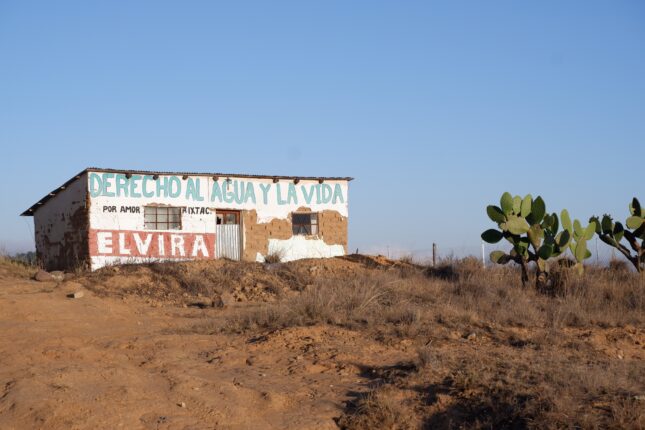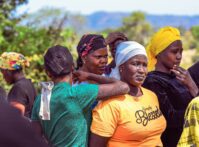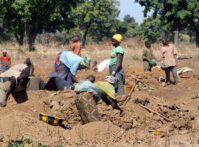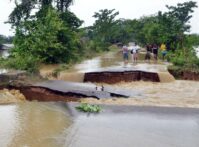-
Low-Carbon Transitions: A Spur (and a Solution) to Colonial Violence?
January 7, 2025 By Erik Post
At the recent G20 meeting in June 2024 in Rio de Janeiro, United Nations Secretary General António Guterres gave an ominous warning: “Unless we limit global temperature rise to 1.5 degrees Celsius, spiraling disasters will devastate every economy.” Guterres implored governments to “speed-up the just transition from fossil fuels to renewables,” and declared that “the end of the fossil fuel age is inevitable.”
Yet while the urgency of transitioning to less fossil fuel intensive energy regimes can hardly be overstated, a prevalent and accompanying assumption that low-carbon energy infrastructures are therefore by definition sustainable development is problematic.
Discourses promoting low-carbon energy infrastructures as sustainable development often are deployed by state and corporate actors as a way to ignore and dismiss concerns about the systemic injustices commited in the name of green and sustainable transitions. By treating energy transitions as a predominantly technological and managerial issue, these approaches also can cause epistemic and ontological forms of violence.
My own research has examined attempts to develop small hydropower projects in Indigenous Masewal and Totonac territories in the Sierra Norte de Puebla in Mexico that eventually came to be known as Proyectos de Muerte (or “Projects of Death”). The battle over these initiatives not only demonstrates how sustainable development narratives promoting low-carbon energy infrastructures can perpetuate violence and colonial patterns of power, but also offers practical examples of how to counter them.
An Energy Transition for Whom?
The Mexican government and corporate developers have sought to develop a dozen small hydropower projects in the Sierra Norte de Puebla since 2012, arguing that they will generate sustainable development while creating negligible negative social and environmental impacts. Yet, Indigenous Masewal and Totonac communities in the Sierra Norte de Puebla have resisted the imposition of these projects while challenging the sustainable development framing offered by the government and the corporations involved.
Regional resistance began when Mexico’s largest mining company—Grupo México—began preparing small hydropower projects in the Totonac communities of Xochimilco and Olintla. Communities from throughout the region joined together in solidarity to protest a lack of Indigenous stakeholders that was a violation of both International Labour Organization (ILO) Convention 169 and the Mexican Constitution.
The nascent community movement organized in defense of the Sierra Norte de Puebla soon learned to their dismay that these initial projects were merely the vanguard of a suite of small and large-scale regional infrastructure projects which aimed to extract metals and energy on a massive scale. Mexico’s government and the project developers argued that these works were necessary to provide clean energy to the population. But a closer examination revealed that they were being developed with the explicit goal of generating electricity for planned open-pit gold, silver, and copper mines.
A Road Map to Violent Transition and Erasure
As opposition to the planned projects increased, violence in the region intensifed. Protest became criminalized, and prominent Indigenous environmental and human rights defenders were locked up without charges. Some members of the movement were physically assaulted, while others received anonymous threats against their lives or their families. The most gruesome expression of this violence was expressed in the assassination of several individuals who were known for their active resistance and opposition to the projects.
The infrastructure projects in the Sierra Norte de Puebla soon came to be known as Proyectos de Muerte (“Projects of Death”)—a label that emphasized the danger they posed to lives, livelihoods, and territories in the region. This moniker points not only to literal forms of violence, but also indicates how these projects represent a continuation of the region’s history of bloody (neo-)colonial domination which threatens the survival of Indigenous communities, cultures, and territories.
Acknowledging this history is crucial to understanding how Indigenous environmental and human rights defenders experience the racist epistemological and ontological violence hidden in the narratives of sustainable development used to justify the projects. Advocates for these hydropower projects have adopted a number of tactics to grossly misrepresent and falsify Indigenous support, including public statements, public relations campaigns, social and environmental impact assessments, and simulated consultations with Masewal and Totonac communities. These strategies have consistently portrayed Indigenous knowledge systems, ways of relating to territory, and cosmologies (understood as the cosmic worldview of the place in the universe of society and culture) as backward, mystical, and magical. These tactics attest to how the government and corporate developers dismiss the concerns and values of the affected communities.
The resistance against Projects of Death in the Sierra Norte de Puebla demonstrates how corporate and state actors can (and do) deploy sustainable development discourses to justify colonial and violent practices. It also underscores how more subtle hidden, slow, and ontological forms of violence are obscured by sustainable development discourses as these frameworks erase Indigenous communities’ voices, concerns, and cosmologies.
“Projects of Life” Offer an Alternative to Colonial Violence
The Masewal and Totonac communities have persisted in the face of this colonial violence, and have achieved remarkable victories by resisting the imposition of most of these planned projects. The regionalization of opposition to Project of Death development also has sparked a revalorization of regional customs and traditions.
Indeed, the burgeoning regional interactions created by thousands of participants and inside democratic assemblies has prompted communities to undertake what they call Proyectos de Vida (“Projects of Life”). These initiatives support Indigenous resurgence, autonomy, and flourishing—and directly challenge the multiple forms of violence that the Projects of Death propagate. Certain Projects of Life, such as the Energía para Yeknemilis enterprise, propose an Indigenous-led low-carbon transition that works in harmony with the territory based on their own knowledge systems, cultures, and cosmologies.
At a moment in which the rapacious planetary extraction of energy and materials has culminated in overlapping ecological, social, and political crises, avoiding a repetition of colonial patterns of power is of paramount importance. Rather than impose state and corporate projects on Indigenous populations and territories to extract more energy and materials, those who seek a low carbon transition should support Indigenous communities as they develop their own approaches to a just energy transition premised on their sovereignty and capacity to flourish.
If the end of the fossil fuel age is inevitable, the colonial age must also find a similar end. Examining the inspiring developments in the Sierra Norte de Puebla demonstrates that the end of the first age cannot be achieved by perpetuating the practices of the latter age. A decolonial energy transition is not only possible; it is imperative.
Erik Post is a PhD Candidate in Geography at the University of British Columbia and Senior Advisor to the European Partnership for Responsible Minerals. He has written about the articulations of geopolitics, sustainable development, extractive resources, and violence in academic journals and policy reports.
Sources: United Nations; Geopolitics; The Journal of Peasant Studies; Proyecto sobre Organización, Desarrollo, Educación e Investigación (PODER); Journal of Latin American Geography; International Development Policy
Photo credit: Photo taken by Erik Post on January 2024 in Ixtacamaxtitlán, a municipality coping with water stress and poverty that had a planned project for a massive silver and gold open-pit mine. ‘Derecho al Agua y la Vida’ translates to ‘The right to water and life.’
 A Publication of the Stimson Center.
A Publication of the Stimson Center.








